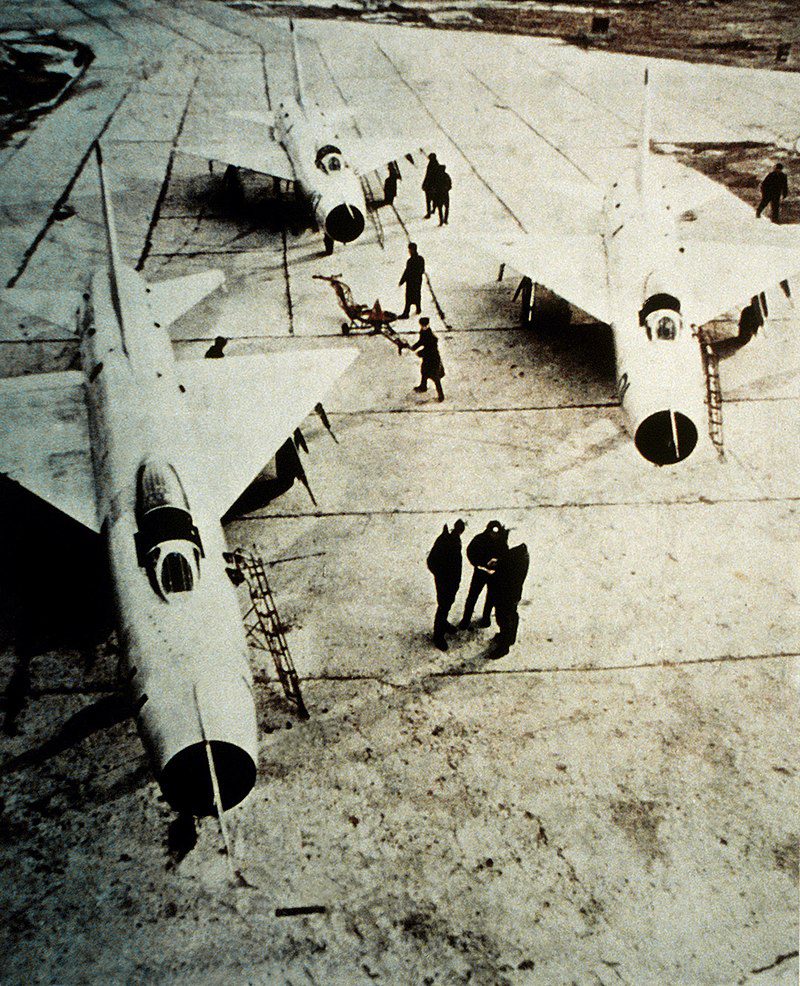
It’s time to meet the Sukhoi Su-9. The Su-9 had one important difference from other jet aircraft. This difference was due to the fact that the Sukhoi Su-9 was not produced suitable for air combat. The main purpose of Soviet engineers in developing this aircraft was to intercept enemy aircraft. Thanks to its high speed and high altitude capabilities, it had the task of intercepting bombers in particular. Its purpose of existence was to protect Soviet territory from an atomic bomb that could be dropped from bombers.
Delta Wings and Speed: Design of The Sukhoi Su-9
Like the MiG-21, the Su-9 had a delta wing design. With its large radome cone on its nose, it had a more intimidating appearance than its contemporaries. The Su-9 lived up to its intimidating appearance, its speed and climb power were unmatched.
Engineers designed the The Sukhoi Su-9 to provide high performance at high altitudes. Although it could not perform elegant maneuvers or tight turns like fighters, it was powerful enough to deal with threats at high altitudes. Its weapons consisted mostly of air-to-air missiles carried under the wings. Since it was not a fighter, they did not care about its cannons.
Entering Service: The Sukhoi Su-9’s Role
When we reached the end of the 1950s, the duty hour of this beautiful aircraft had come. It had an important place in the layered air defense system of the Soviet Union, which we will discuss in our analyses later. Defending the vast lands of the Soviets requires extensive logistics and planning. Soviet commanders also deployed the Su-9 at strategic points across vast Soviet territory, keeping it ready at all times so that it could be activated immediately in the event of a threat.
It required skilled pilots to fly, given its high landing speed and specific flight characteristics. The Sukhoi Su-9 wasn’t as widely exported as some other Soviet aircraft, primarily serving within the Soviet Union and some close allies.
Side-by-Side with the MiG-21
Interestingly, the Su-9 began to enter service around the same time as the more famous MiG-21. While both were supersonic jets from the same era, they had different design philosophies and roles. The MiG-21 was a light aircraft. It was a fighter that could effectively engage in air combat thanks to its lightweight structure. The Sukhoi Su-9 was a heavier, specialized interceptor aircraft. The missions of these two colleagues were complementary. Engineers designed them to work in perfect harmony.
Legacy of a Specialized Interceptor
The Su-9 did not have the longevity of the MiG-21, which served for more than half a century. Soviet authorities soon replaced the Su-11s with more advanced fighters that arrived later. However, it represented a significant step in Soviet interceptor development. It became a memorable aircraft because it pushed the speed and altitude limits of its time.
While not as famous globally as the MiG-21, The Sukhoi Su-9 was a vital component of Soviet air defense during a tense period of the Cold War. It was a specialized machine built for a specific threat, a testament to the focused engineering of the era. Its legacy is that of a capable, high-speed interceptor that played its part in the silent aerial chess match of the Cold War.
We will continue our series of articles discussing Soviet warplanes with the speed monster MiG-25. Stay tuned.





